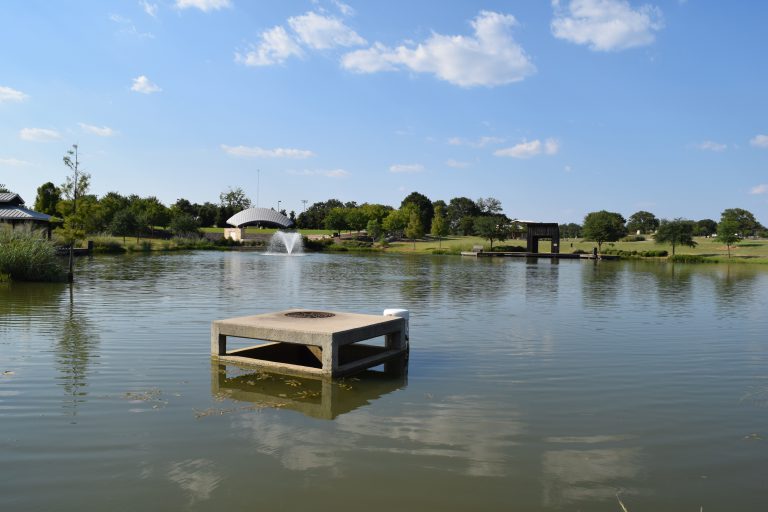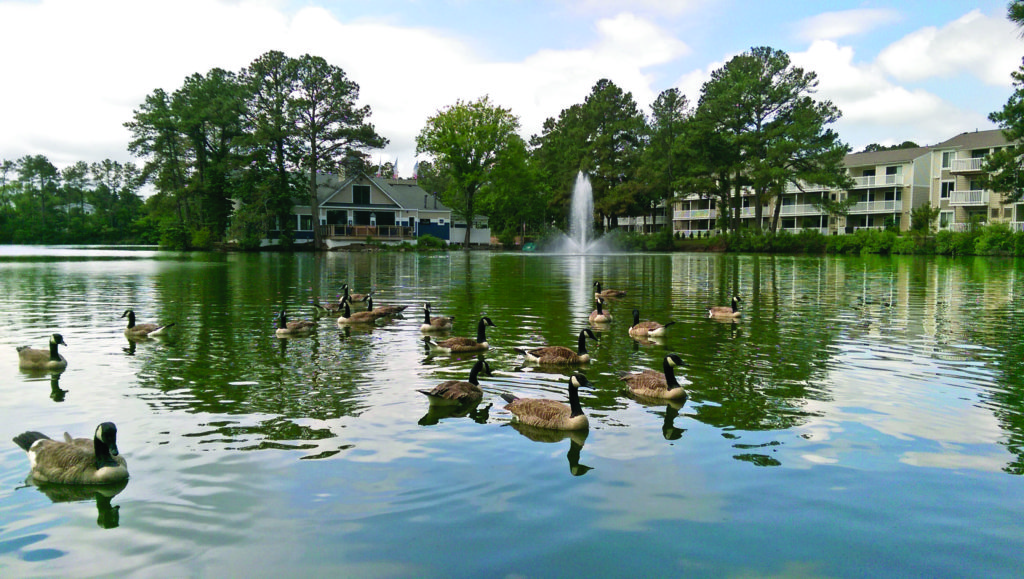

All lakes and ponds are unique and serve various purposes, but whether your waterbody is a quarter acre stormwater retention pond or a 3,000-acre recreational lake, it provides habitat for countless species of wildlife from insects to eagles. Some, like mosquitoes, we wish to discourage. A reasonable number of appropriate waterfowl species, on the other hand, may well be the most popular visitors. Migratory species like ducks can use all of the welcoming waterbodies they can find, as many species are facing challenges from shrinking habitats throughout their ranges.
If you wish to make your property more hospitable to ducks and other waterfowl, it is important to consider which species you want to encourage, and how many individuals the surrounding area can support. If you attract too many birds to your pond, they may defoliate the surrounding area. Canada geese can be particularly destructive in large numbers, especially if they leave the pond to graze on land. The best way to discourage geese from leaving the water is to grow taller vegetation along the shoreline, with plants that also provide habitat value to desirable waterfowl. Plants like Arrow Arum, Duck Potato, and Pickerelweed all provide a food source for waterfowl while discouraging birds from foraging on land.
Not all plants that are beneficial for waterfowl will work in every pond. The setting and primary purpose of a waterbody are important to consider when deciding which species to plant and which to exclude. Emergent species like those listed above are great additions to almost any pond. Sago Pondweed and Wild Celery are exceptional plants for providing food to waterfowl and would be a great choice for a refuge pond, but have no place in a stormwater pond as submersed vegetation can affect its ability to function. Wild Rice is a great plant for a meadow wetland, not so much for a neighborhood pond.
It is also important to remember that the species present and their habitat requirements change through the year. In the spring and summer, mallards and wood ducks are in need of nesting habitat throughout the mid-Atlantic. You can help furnish this by providing nest boxes for the ducks that frequent your pond. In the winter, a wide variety of migratory ducks are visiting our area looking for open water and calories. A submersed aeration system will keep ice from forming in the areas around the diffusers, providing waterfowl with a place to swim, rest, and feed. Aeration also helps improve the health of the pond itself, which in turn provides habitat for insects, mollusks, and crustaceans that waterfowl rely on.
Some ponds have greater habitat potential than others, and some may require some changes to the landscape to reach their full potential. Given the challenges faced by our migratory waterfowl, any effort taken on their behalf will be greatly appreciated by ducks and all who love them. Who doesn’t love ducks?









